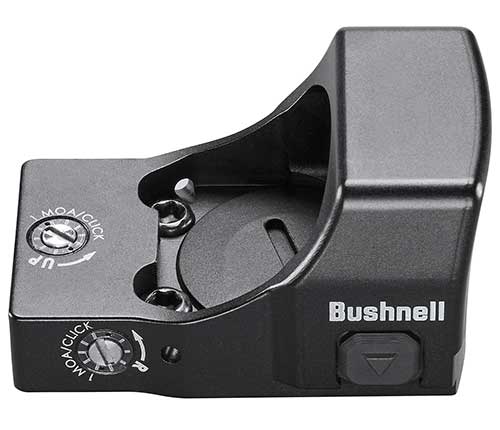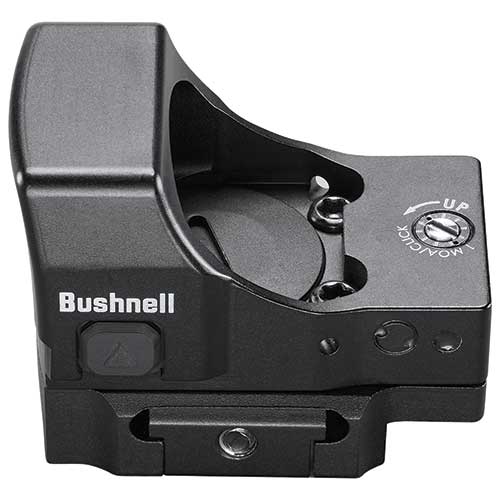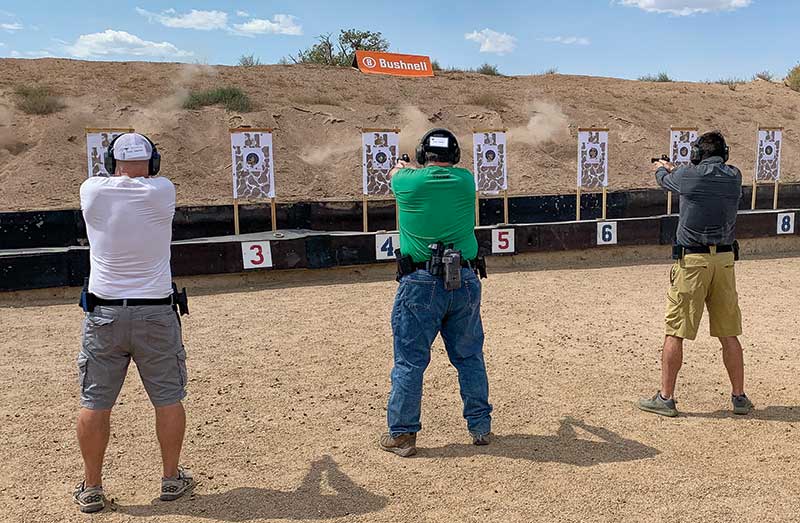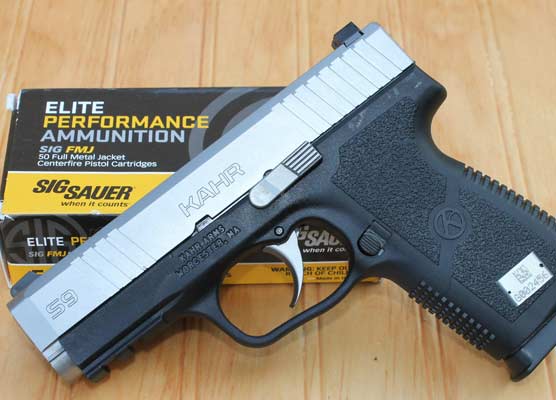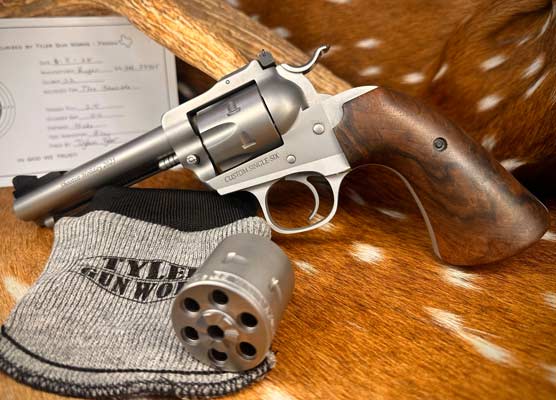Connecting The Dot
Training with Bushnell’s Red Dot Sights
Mounting red dot sights (RDS) on handguns is nothing new; it’s been done for at least a couple of decades. In the beginning it was first widely accepted by competitors in the shooting sports. Tales of short battery life and recoil knocking them out of adjustment abounded.
The nonbelievers thought of them as only toys for competitors. Everyone knew serious shooters used the ever-dependable iron sights, while forgetting it was the competitive world that introduced us to using RDSs on carbines. The cop or soldier who does not have a red dot sight mounted now is more the exception than the rule. A lot has changed since those early years.
I was recently invited by Vista Outdoor (the parent company of Bushnell) along with other writers to attend an event for the debut of two new red dot sights from Bushnell: the RXS-100 and RXS-250. The RXS-100 has an MSRP of only $99 and the RXS-250 will sell for $250 — great prices for quality red dot sights. The event was hosted at Gunsite — the world’s oldest privately run shooting school and staffed by some of the best instructors in the nation.
Pair Of Dots
While the RXS-100 (100) is loaded with features, the RXS-250 (250) is more rugged and suited for duty. A few of the upgrades on the 250 includes 10 brightness settings, a user selectable 12-hour timeout to increase battery life and a more rugged, chamfered hood to reduce the chances of the sight snagging on clothing or other objects.
The event used the RXS-250 attached to a Gen 5 GLOCK. The Bushnell sights will mount directly to a pistol using the DeltaPoint footprint. The sight also comes with a Weaver-type low profile mount for use on other platforms.
The attendees were asked by a show of hands how many had previously used a red dot sight on a pistol. I was the only one not to raise my hand and had not fired a GLOCK in over 10 years. However, I was looking forward to the experience and learning new techniques.
The SOP with an RDS on a carbine is turn it on and leave it on. Admittedly, not keeping up with the times, this was a concern to me for defensive use. A critical incident is not the time to turn the sight on or find out the batteries have died.
I was pleasantly surprised to learn the 250 has a 50,000-hour battery life — that’s more than five years — when left on mid-level 5 setting and selectable 12-hour timeout for even more battery life.
The RXS-250 uses a 4 MOA dot, and as mentioned has 10 brightness settings, with the lowest setting being night vision compatible. The readily available CR2032 top loads without needing to remove the sight — no need to re-zero when changing batteries.
Included with the RXS-250 is the battery, rubber sight cover, Weaver-style low-profile mount, Bushnell multi-tool and basic adjustment tools and Spudz cleaning cloth.
Gearing Up
After morning introductions, we were given product presentations from Bushnell and Blackhawk — another Vista Outdoor company. Another product presentation was on the Federal 147-grain Train/Defend ammo we would be using for the next three days. We were issued a GLOCK with sight mounted and Blackhawk holsters, belts and magazine pouches.
After lunch we assembled on the square range and commenced with dry fire exercises so instructors could evaluate everyone was on the same page in terms of safely presenting the pistol.
The first live fire drill of the day was only at three yards and sounded simple: find the red dot, fire a single shot, place the dot on the bullet hole for an aiming point and fire four more rounds. I wound up with a group of about 2″ while almost everyone else had fired a single, ragged hole. Hmm, there may be more to this red dot stuff than I had thought …
On the second day we were given demonstrations and then coached by Bushnell professional shooters Jessie Harrison and KC Eusebio.
Dot Technique … Learned
I learned the suggested technique is to raise the pistol to eye level and push straight out in an Isosceles stance, look at where you want the bullet to strike, letting the dot appear and pressing the trigger.
The event made me feel like I was shooting in a parallel universe. I gave up on GLOCKs a decade ago because no matter how much I tried, they always shot high for me. Additionally, after shooting 1911s with really nice triggers, going to a mediocre trigger is not conducive to accuracy.
On top of this, for five decades I’ve been trained to not look at the target but to focus on the front sight, and for almost as long used the Weaver stance instead of Isosceles.
Determined to get the most this class had to offer, I made a point of trying to overcome my deeply ingrained habits and take the instructor’s advice. My groups began to improve dramatically except for when I found myself not looking at the target and chasing the dot.
The final day on the range found the class in both the outdoor and indoor (shoot house) simulators. On a different square range than what we had been using — and offered a 180-degree field of fire — we were challenged by Gunsite’s robotic charging target.
The RDS didn’t seem to help me get on target faster than iron sights at close range, such as in one of Gunsite’s shoot-houses, but this could change as I become more familiar with them.
Where I did notice a distinct advantage was at longer ranges. Gunsite’s outdoor simulators uses terrain to conceal steel targets and you must “slice the pie” in this environment just as you would indoors. On one target in the North Draw, 60 yards distant, only the head and upper shoulders were visible. I placed the dot on the head and took the target down with a single shot. Honestly, quite possibly a shot I could not have made reliably with irons.
After only three days working with the Bushnell RXS-250, I can definitely see the advantages of using a red dot sight on a pistol. For me personally, it would likely take thousands of repetitions to build enough confidence before I would carry it daily for defense.
Both the RXS-100 and RXS-250 come with a five-year transferable warranty.
For more info: Bushnell.com, Gunsite.com




